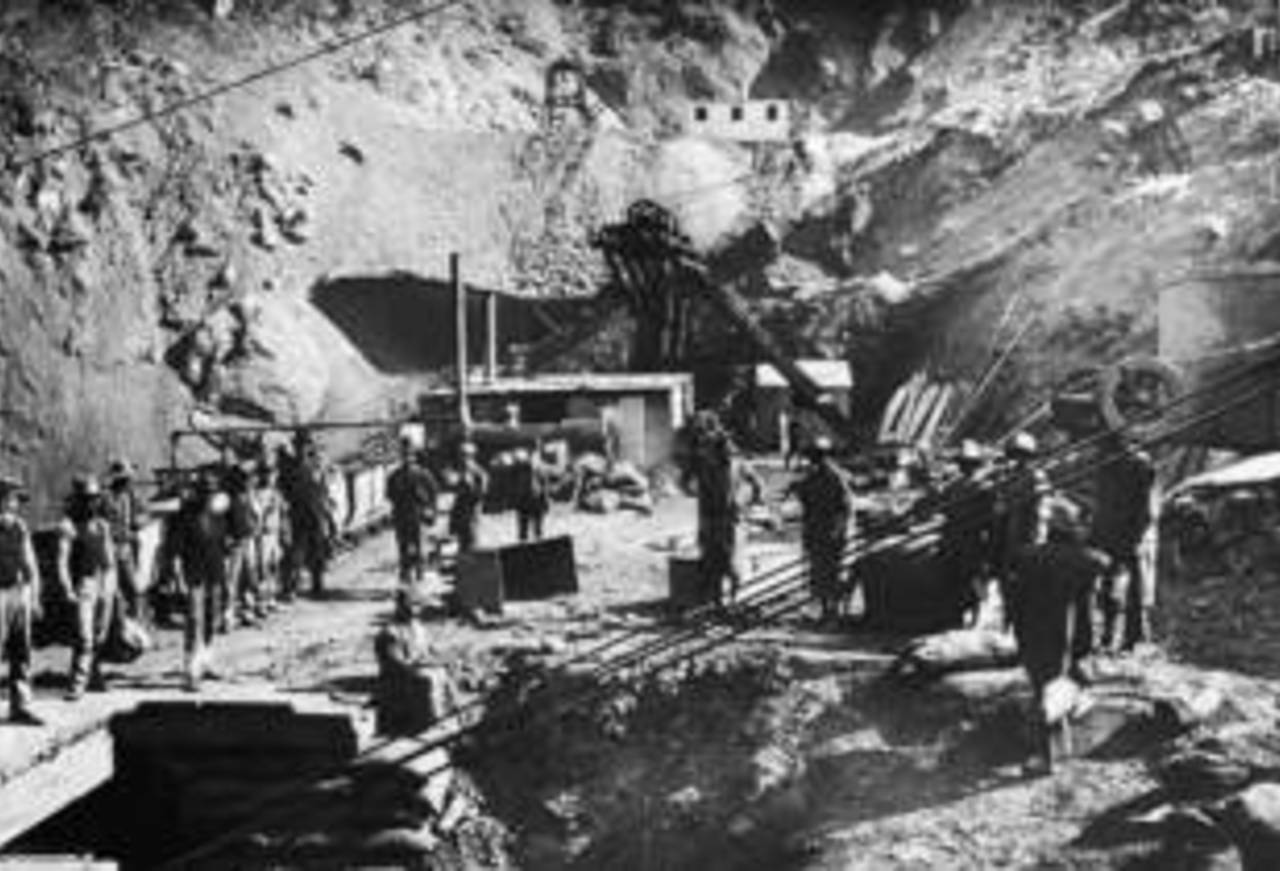The hole that became a city
Going walkabout in lazy Kimberley
Sriram Veera
11-May-2009

The Kimberley mine in its heyday, in the 1880s • Getty Images
In Kimberley, you dig. It's a hole that became a city. After the first diamond rush, centred on a farmhouse, in 1869, the second began two years later after news spread that a small hillock was proving a treasure mine. The hill became one of the biggest man-made craters in the world. Buildings sprang up around the "Big Hole" and a city grew around it.
Some of the cricketers visited the Big Hole yesterday. The crater is surrounded by a reconstructed town, complete with a church, a diggers' bar and the auction house from the days of the enterprising diamond hunters Barney Barnato and Cecil Rhodes. Some of the players bought some diamonds. Some enjoyed the audio-visual treat. A video show informs that the hole was about 800 meters deep, and that around 14 million carats worth of diamonds were extracted before the mining stopped. It's quite a sight, even now, though you can't see the entire depth as it's partly filled with water.
The stories about the early days of Kimberley are, as you would expect, the stuff of Bollywood - intrigue, tragedy, greed, and man's desperation for money.
One involves Barnato, who became very rich after he sold out to Rhodes, but died aboard ship while travelling back to England. Many believe it was suicide, some say it was murder; the museum literature leaves it at a mystery that's unsolved till date. I am pitching for murder. Call Hercule Poirot, I say.
The museum also takes you underground where there's a display of artifacts from the mines, and diamonds from across the world. The show and the tour are good, but somehow one felt the story deserved a grander treatment.
Kumar Dharmasena, the umpire, was in there too. "If I get my hands on a few [diamonds], I can quit umpiring, eh?" Sorry, sir, I would have to push you down the hole, in that case. "Excuse me?"
Tom Moody was busy trying to buy some stones. I didn't wait to find out whether he did, though. In Kimberley, you want your own diamond. But lacking the necessary funds, I hit the Occidental bar instead, an exact recreation of the market-square original from the 1880s. A couple of drinks in the afternoon helped bring insight: It's just a stone. Who wants it?

The mine is a tourist spot today called the 'Big Hole'•Getty Images
Try telling that to Cecil Rhodes, though. A man who began his career making and selling ice, he came to South Africa to recuperate from tuberculosis and ended up with one of the biggest treasure hauls of all time.
He left a charming little town in Kimberley. Lovely clear skies, a great place to walk around, and everyone seems to know everyone else. It seems like a place from Enid Blyton's Famous Five novels. One can visualise Timmy nosing out a diamond from some rubble and the five setting out on an adventure that would be read by dreamy kids from London to Chennai.
There's not much to do in Kimberley if you are a restless youngster who likes to live in big cities, but it seems ideal for lazy alcoholics like me. There are several watering holes, and on many nights they stay open till daybreak. The locals claim the town has the lowest crime-rate in the country. Surprising, considering its history. The pirates have turned into priests. I meet another ex-smuggler, who claims he is married to a cop. Oh well.
Sriram Veera is a staff writer at Cricinfo